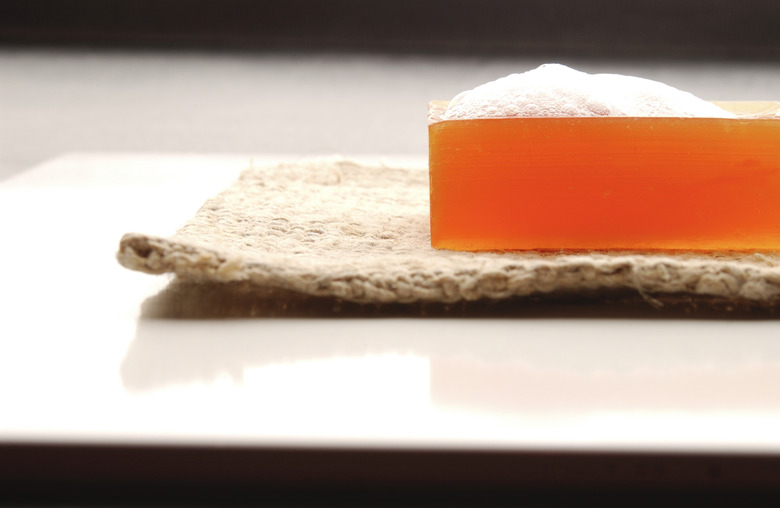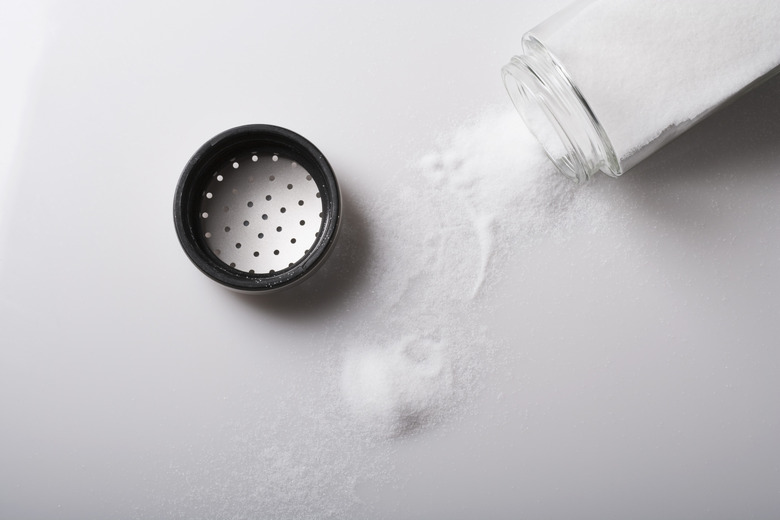Characteristics Of Acids, Bases & Salts
Acids, bases and salts are part of a variety of things we handle daily. Acids give citrus fruit its sour taste, while bases such as ammonia are found in many types of cleaners. Salts are a product of the reaction between an acid and a base. A common method used to determine an acid or a base is a litmus test, but there are other characteristics that can help you identify acids, bases and salts.
Acids
Acids
Acids have a sour taste. Citric acid is what makes the sour taste of lemons, oranges and other citrus fruits, while acetic acid gives vinegar its sour taste. An acid will turn litmus paper red. Litmus is a vegetable dye that turns red to indicate an acid and blue to indicate a base. Acids also contain combined hydrogen. According to the website Journey Into Science, when metals such as zinc are placed in an acid, a reaction will occur. The acid and zinc will bubble and release hydrogen gas. Acids will release hydrogen in water as well.
Acids also conduct electricity and react with bases to form water and salt. Acids are classified as being either strong or weak. A strong acid detaches or separates in a water solution and a weak acid does not.
Bases
Bases
Bases are ionic compounds that contain metal and hydrogen ions. Bases taste bitter and are slippery when dissolved in water. For example, if you rub household ammonia between your fingers, you will feel the slipperiness of a base. Soap is slippery because it contains a base as well. When placed on red litmus paper, bases will turn blue. Bases also release hydroxide ions in water. Ammonium hydroxide, or ammonia, is a common base used in compounds like nitric acid and is also used in household cleaners.
Just as acids neutralize bases, a base will also neutralize an acid. For example, magnesium hydroxide, found in milk of magnesium, neutralizes stomach acid.
Salts
Salts
Salt is a compound, which is an acid and a base combined. There are many chemical compounds that are classified as salts according to Journey Into Science. The most common is table salt, or sodium chloride. Baking soda, or sodium bicarbonate, is also a salt. Salts are typically made of metallic and non-metallic ions; it separates in water because the tightly bonded ions present in salts are weakened.
Salts can be several different colors and may be any of the five tastes, including salty, sweet, bitter, sour or savory. Their odor depends on the acid and base it is comprised of. Salts comprised of strong acids and bases, called strong salts, are odorless. Salts made from weak bases and acids, called weak salts, may smell like the acid or base used to make it. For example, vinegar smells like acetic acid and cyanides smell like hydrogen cyanide, which has an almond-like odor.
Cite This Article
MLA
Miller, Renee. "Characteristics Of Acids, Bases & Salts" sciencing.com, https://www.sciencing.com/characteristics-acids-bases-salts-7241740/. 25 April 2018.
APA
Miller, Renee. (2018, April 25). Characteristics Of Acids, Bases & Salts. sciencing.com. Retrieved from https://www.sciencing.com/characteristics-acids-bases-salts-7241740/
Chicago
Miller, Renee. Characteristics Of Acids, Bases & Salts last modified March 24, 2022. https://www.sciencing.com/characteristics-acids-bases-salts-7241740/


